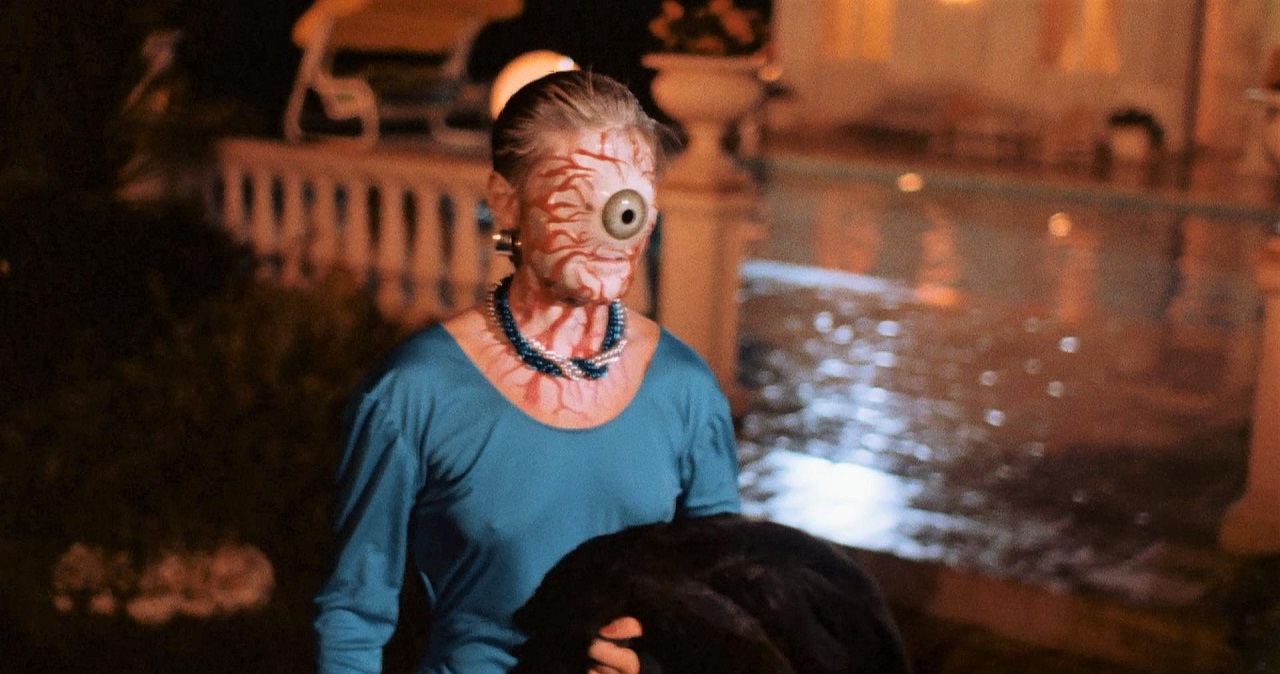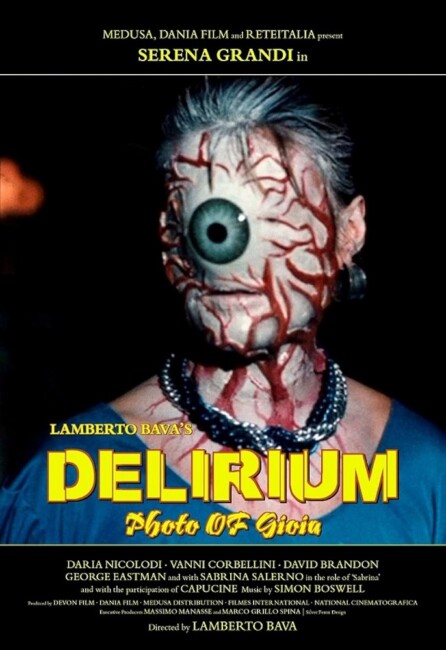(Le Foto do Gioia)
Italy. 1987.
Crew
Director – Lamberto Bava, Screenplay – Gianfranco Clerici & Daniele Stroppa, Story – Luciano Martino, Photography – Gianlorenzo Battaglia, Music – Simon Boswell, Art Direction – Antonello Geleng. Production Company – Dania Film/Reteitali S.p.A./Devon Film/Medusa Distribuzione/National Cinematografica/Filmes International.
Cast
Serena Grandi (Gloria), Daria Nicolodi (Evelyn), Karl Zinny (Mark), Vanni Corbellini (Tony), David Brandon (Roberto), Capucine (Flora), Sabrina Salerno (Sabrina), George Eastman (Alex), Lino Salemme (Inspector Corsi), Katrine Michelsen (Kim)
Plot
Gloria is a former model who runs Pussycat fashion magazine in Rome. The latest cover model Kim is murdered and pictures are sent to the magazine of her body posed against blow ups from one of Gloria’s modelling shoots. This causes sales of the magazine to skyrocket. The killer, who is said to be blonde, then stalks other models at Pussycat, all posing them against shots of Gloria.
The Giallo film is a genre that emerged in Italy in the 1960s. It wasn’t created by Mario Bava but he was the one who laid down all the essence of its style the classic Blood and Black Lace (1964) and subsequent works such as Five Dolls for an August Moon (1970), Hatchet for a Honeymoon/Blood Brides (1970) and Twitch of the Death Nerve (1971). The giallo derived its basics from the Hollywood model of the 1960s psycho-thriller but placed its emphasis on gaudy visuals, extravagant directorial set-ups and a sado-sexual undertow.
Lamberto Bava is the son of Mario Bava. Lamberto had worked as an assistant director on his father’s film since the 1960s before being offered the chance to direct with the perversely interesting necrophilia film Macabre (1980). What caused Lambeto’s career to take off was his fifth film Demons (1985), a Dario Argento-produced work where the possessed dead take over a movie theatre. (See below for Lamberto Bava’s other films). Lamberto was riding on the success of Demons at the time he took on Delirium. Delirium had originally been an Argento project but he has purportedly left after a change of producers whereupon the project was given to Lamberto. Lamberto has since made disparaging remarks about the film.
Delirium is a film that allows Lamberto to go back and revisit the giallo genre that his father made famous. The plot is essentially a rehash of Blood and Black Lace – both films are about a killer in black stalking people around a fashion house. Although given that most of the models in the magazine are undressed what we have here seems less like a fashion magazine than an outright porn magazine. This seems to be much of film’s problems – where Mario kept all the sexuality dark and suppressed, gave us more a tease of eroticism, Lamberto makes a giallo that sits far more squarely in the territory of something like Strip Nude for Your Killer (1975) and brings all the brooding eroticism out of its hiding place and gets all of the women in the cast topless at various points.

As is frequently said of Lamberto, he inherited the name from his father but none of the directorial élan that came with it. There are glimmers of style here – like the opening where the killer looks in through the house and sees Katrine Michelsen where her head bizarrely seems to be a single eyeball, before pitchforking her and dumping her in the pool. Or the perverse image of the dead bodies being posed against blow-ups of Serena Grandi’s modelling shots. Delirium is made with an effort in the budgetary department – the dressings could have come from a home decor magazine and all the women are exquisitely made up, costumed and outfitted with classy jewellery for what would have been the height of mid-1980s fashion.
On the other hand, a later scene where Sabrina Salerno wanders around her apartment naked and the killer sees her with a fly’s head descends into silliness from about the point that bees are released into the apartment and she ends up being stung to death. When you compare Delirium to the stylishness of Bava Sr or the directorial extravagance of Dario Argento, it seems sorely lacking. As with most giallo, the revelation of the killer’s identity could have been chosen at random and here comes to a particularly unmemorable unmasking.
Lamberto Bava’s other genre films are:– Macabre/Frozen Terror (1980), A Blade in the Dark (1983), Devouring Waves/Devil Fish (1984), Demons (1985), Demons 2: The Nightmare Returns (1987), Graveyard Disturbance (1987), Demons 3: The Ogre (1988), Dinner with a Vampire (1988), The Mask of the Demon (1989), The Prince of Terror (1988), Body Puzzle (1992), The Torturer (2005) and Ghost Son (2007). Nowadays, Lamberto Bava mostly works in tv.
Trailer here


